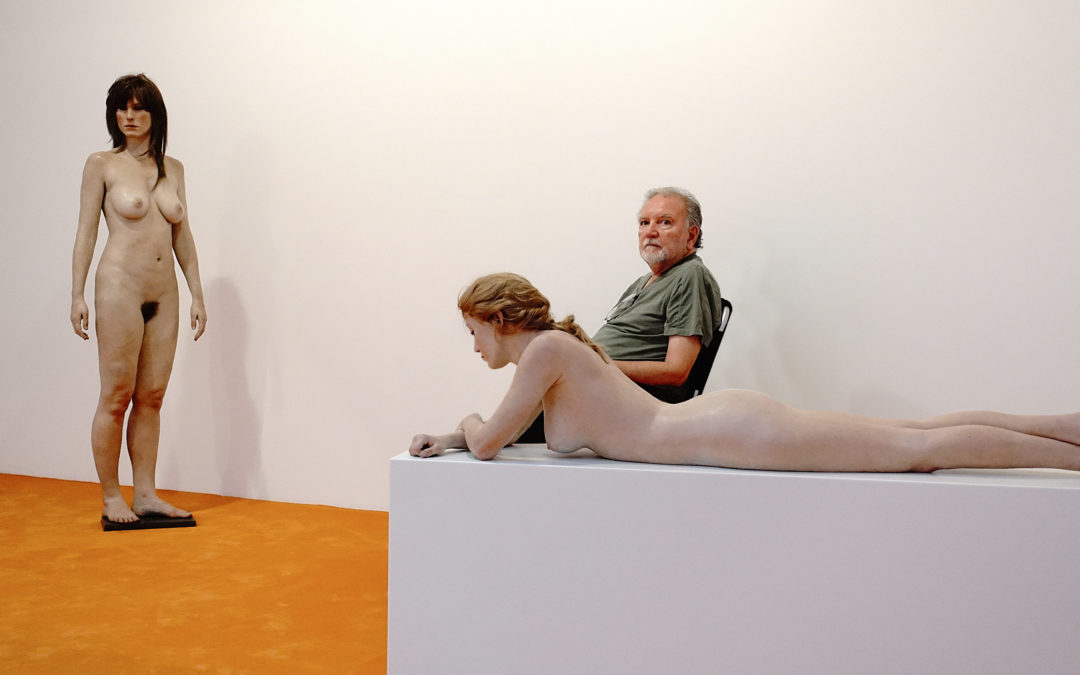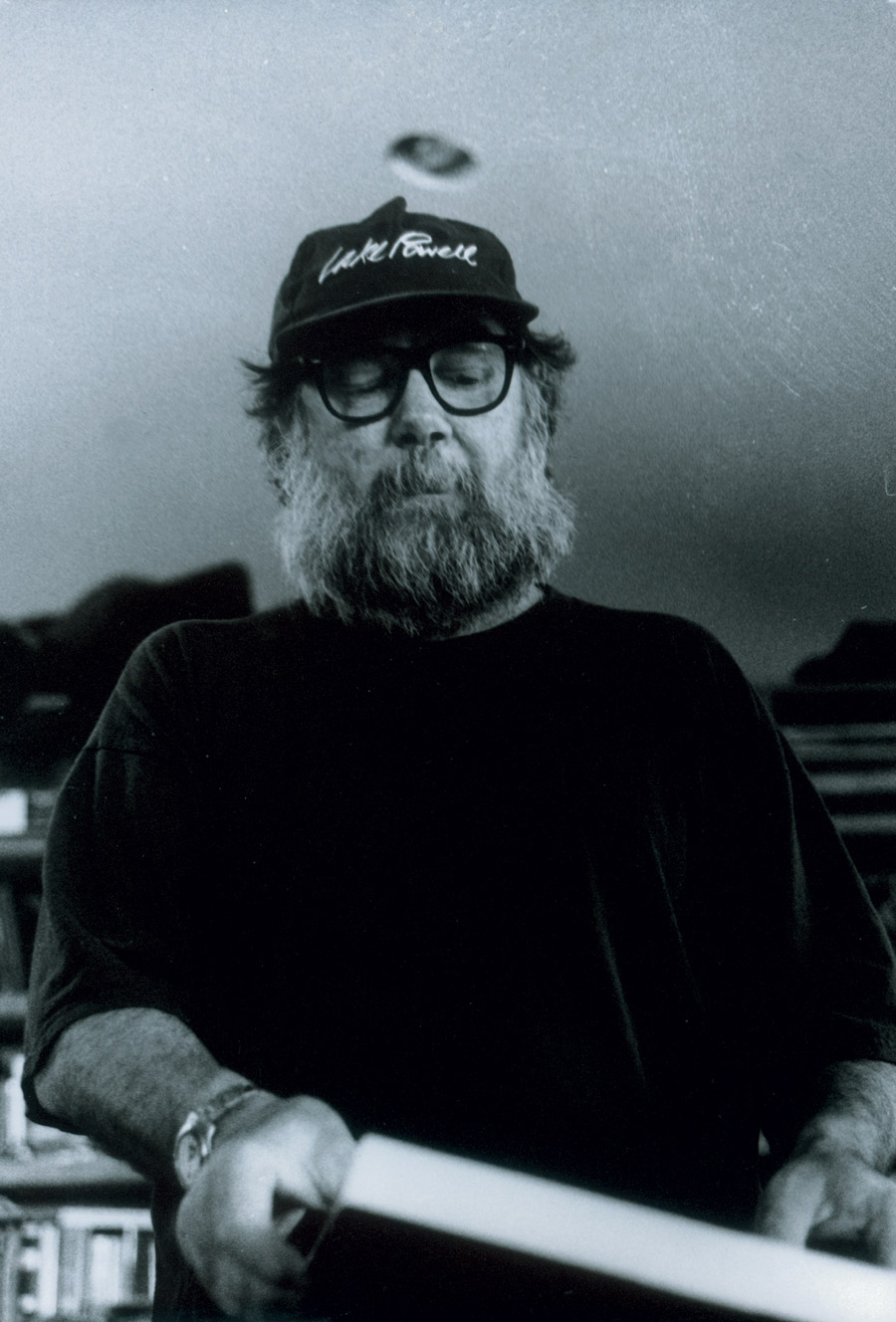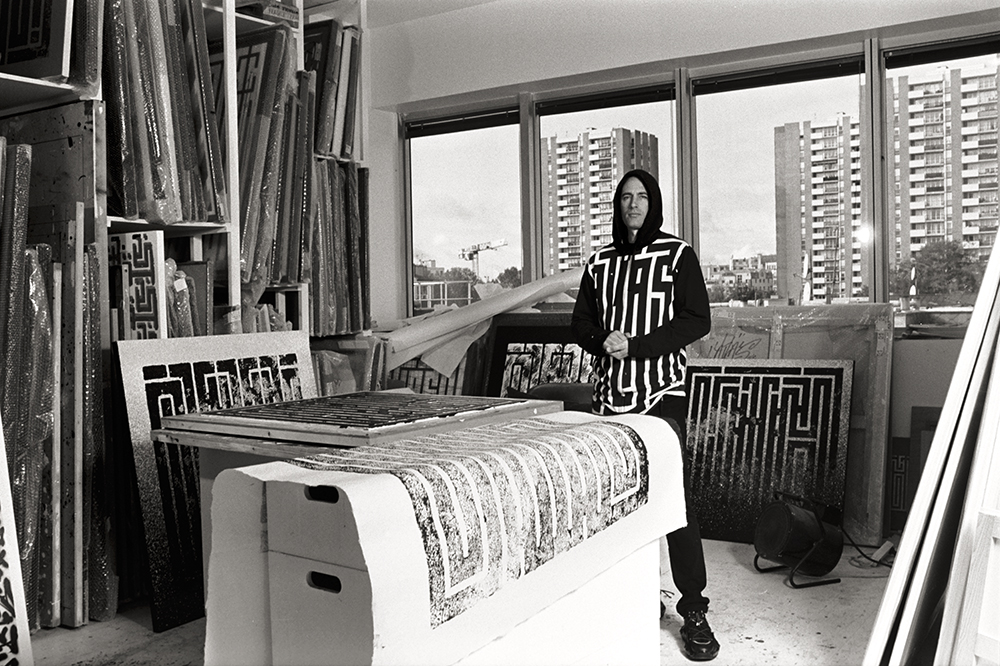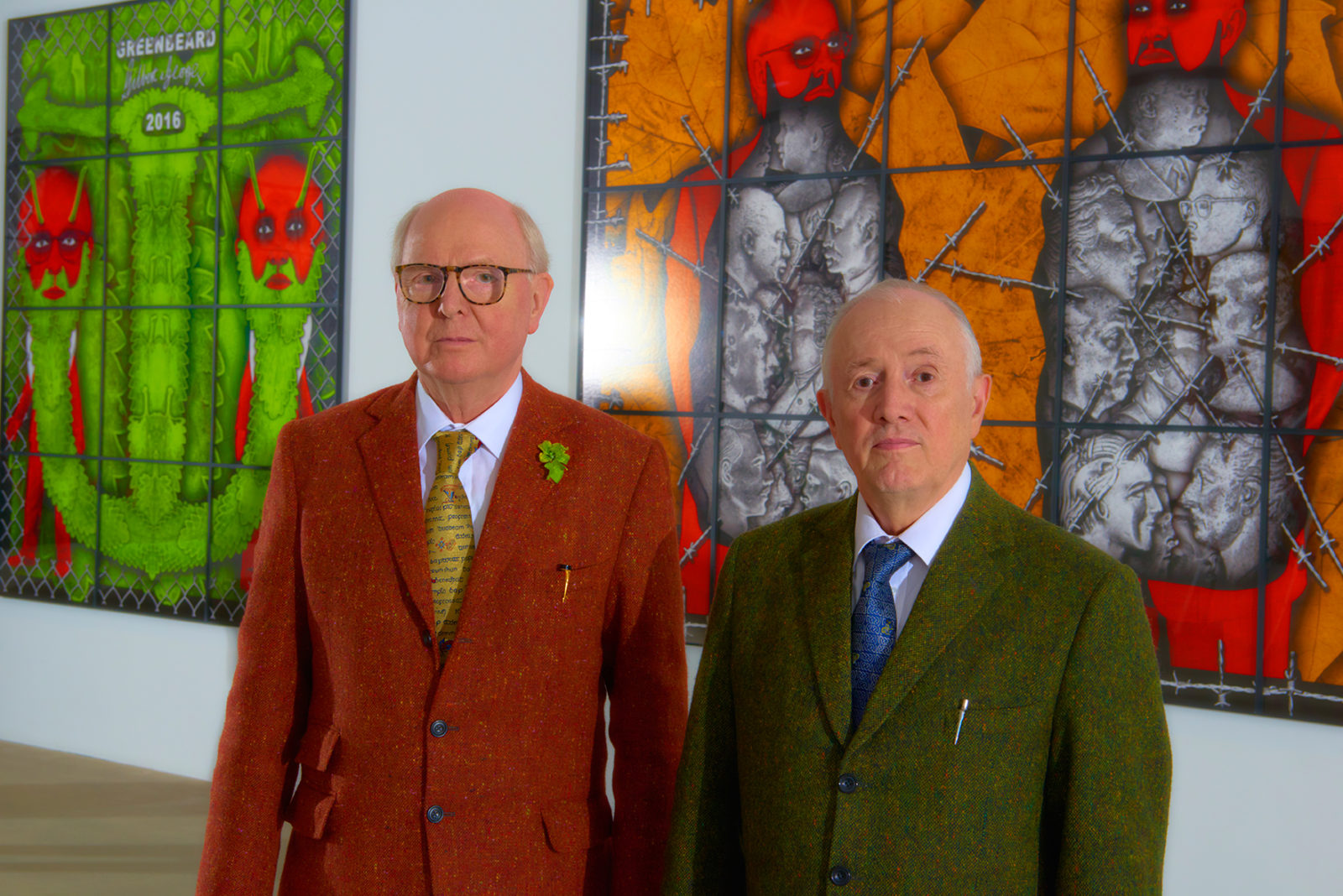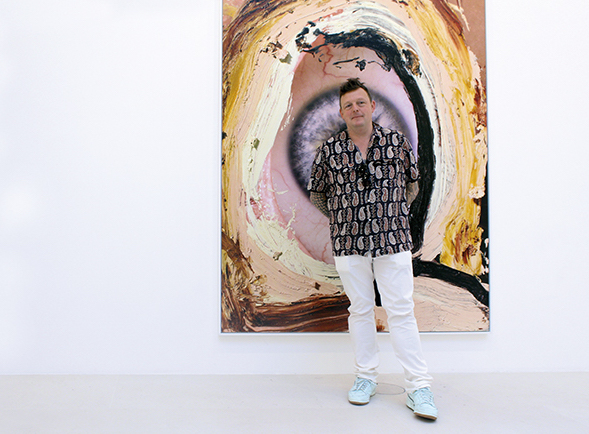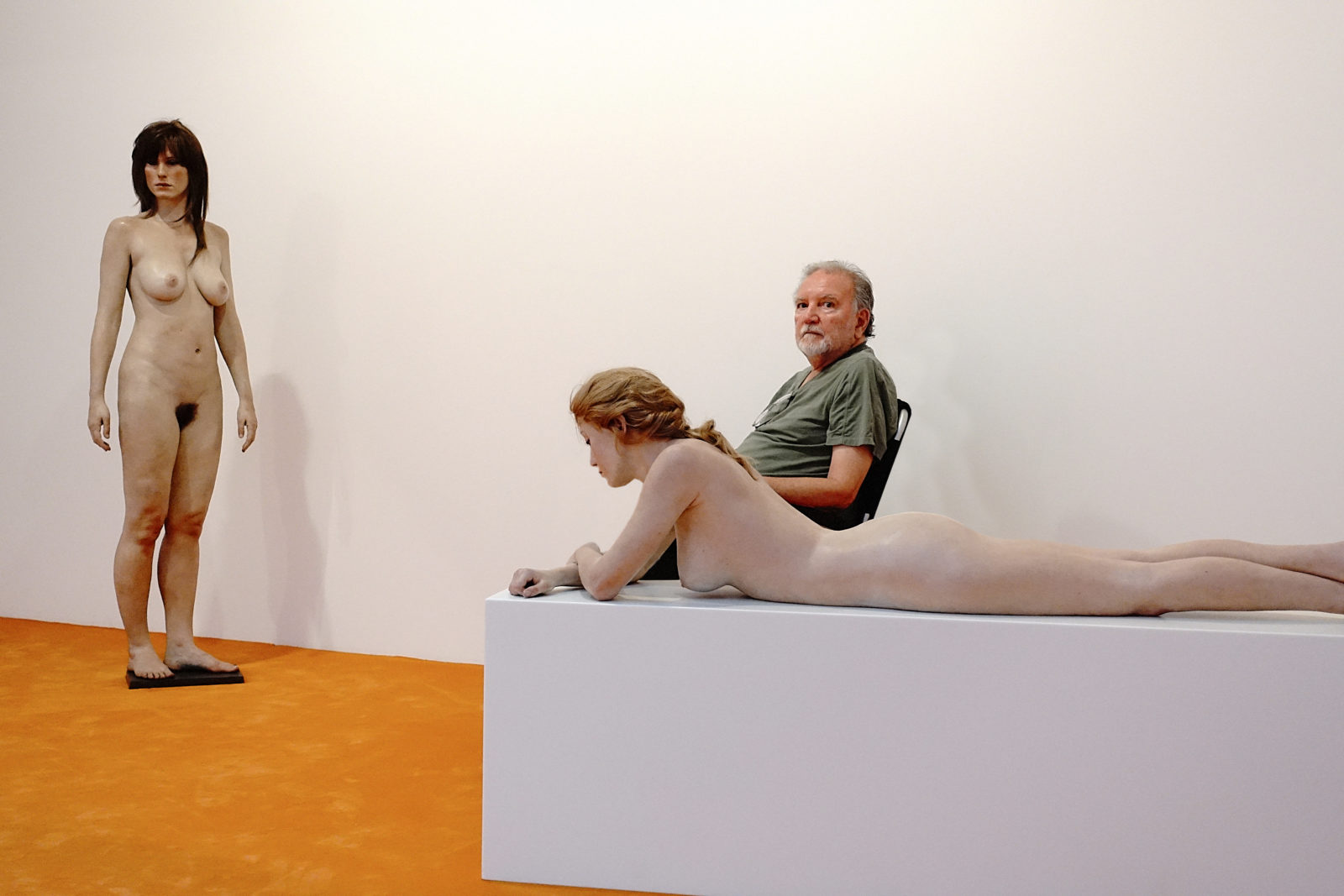
Standing Brunette, 2011, Polychromed bronze with acrylic hair / Amber Releening, 2015, Polychromed bronze with acrylic hair, corian pedestal
A MEETING WITH JOHN DEANDREA
By Armelle Leturcq
A major figure in the Hyperrealism movement of the early 1970s, American artist John DeAndrea has sculpted the bare necessities of women’s bodies for over fifty years. Cutting against the grain of the abstraction wave which swept through the era, DeAndrea unveiled his first photorealistic silicon bodies in 1979, when he and Chuck Close became the first American artists to show in Paris at the Centre Pompidou. He has experimented with multiple techniques and materials – such as fiberglass, bronze and vinyl – in his quest to recreate reality down to the last detail. We sat down with him alongside his exhibition at Galerie Georges-Philippe & Nathalie Vallois.
Has it been a long time since you’ve had a personal show in France?
It’s been thirty years. Time passes fast. I’ve been in Paris many times, but with my art it’s been a while. I was the first American artist to expose at the Centre George Pompidou with Chuck Close, in 1979. The show was called “Copie conforme ?”. Hucleux was exposing with us, too. Chuck Close and I were young. I knew him when he was a student, just shortly.
Were you friends with Chuck Close?
No, I wouldn’t say that. I just knew him when we were students. We were together in New York, but I was represented by the OK Harris Gallery and he was at Pace Gallery, I think. I was at OK Harris for about ten years. Ivan Karp was a genius. He saw the real stuff before anybody saw it. He had about six or seven painters and then me and Duane Hanson as sculptors. Karp started out in Soho when there weren’t any galleries there. The first time I went to New York, you couldn’t find this gallery. You had to go in between the trucks to discover the place. I lived in Denver after a time in New Mexico. I used to never pay attention to art. I never read magazines or anything. I thought of it, but wasn’t the type of person to look at it. When I did these figures, I thought there was nothing like them, they were pretty crazy. (laughs) I took photographs of them and sent them to the five biggest galleries and all of them said no… No way kid… Karp was one of the directors at Leo Castelli Gallery, he saw the pictures I sent of my sculptures and wrote to me on a little yellow card that he was going to open his own gallery. When he did, he asked me if I was still working. I didn’t know what I was doing so I kept the sculpture’s eyes taped. I painted her, took the tape off the eyes and put the wig on her. I then sent the picture of the sculpture to Karp and he told me to send the sculpture to him. He took it and sold it right away for four hundred dollars. That was so much money that I quit my job the same day… He didn’t take fifty percent out like they all do. He immediately asked me for another one. I said I was working on it. (laughs) So I finished the second one and he sold it again in no time. That went on for almost two years. He had a lot of artists in his gallery, mostly photorealists. He was selling everything pretty cheap.
And about Duane Hanson, what was your relationship with him?
The second time I went to New York, I visited Duane Hanson who was making sculptures of fat and skinny people without distinction. I saw a bit of myself in him. We became really good friends. We both had our own things. I liked nudes, more classical-looking stuff and he was more contemporary. We had a great relationship. He was older than me. When I first met him, he’d been living in New York for only a couple years and he had cancer. They operated on him and he was saved so he continued working for many years. Then his cancer came back again for seven years before he was gone, for good.
Do you use the same materials as Duane Hanson to produce your sculptures?
I started using fiberglass at the same time as him. Then I told him to try the vinyl, so he made some vinyl figures. But then I found out vinyl wouldn’t last so I switched to bronze about twenty years ago. I made a lot of my classical pieces in plastic and sadly they won’t last long. But the fiberglass lasts long.
Who are all these models in your work?
The girl in the sculpture Christine, for example, she came to Paris, got AIDS and died young. She was a good friend of mine. When she died I didn’t want to use her head in my sculptures anymore, then when I did the Mother and Child sculpture, I made a Madonna out of her. It was Aileen Parker. There are all kinds of different things you do but you don’t tell anybody.
Every sculpture has a personal story?
Yes, in a way. My personal story runs through my work. I’ve worked for fifty years. So in fifty years, a lot has happened. I still continue to produce works today. I started working with other models recently. When I was young I did younger girls. I continue experimenting to see how it comes out.
What difference do you see between your work and Duane’s work?
A world of difference. He did fat women, shoppers, old guys, workers… I would have never done his work because I would have never had the guts. I would never take an ugly old woman and tell her to model for me. I would make a character out of her, make it funny. People don’t like that stuff; they look at it because they’re curious. It’s beyond me to do that. My models tell a different story. You’d think it would be hard to get them nude but not at all. I respect my models and Duane was the same way, they can feel it. I respect their nudity so it was easy for them to strip down. Duane would let his models wear clothes, that’s also very different. I could never do his work and I think he couldn’t do mine either.
Did you meet Mel Ramos? Do you feel a certain connection?
No, don’t say that. He’s a nice guy. But I don’t feel a connection with anybody in the art world. I did a Jesus figure, which was a really beautiful bronze piece. I was raised as a Catholic boy, so I’ve wanted to do that forever. I’m not religious though. Later on, when the right model came my way, I made it. But I thought about it for forty years. You’re only going to do a few things that are original, but I never make a big deal out of it.
You are really independent, away from the art world?
Right. Everyone who knows me knows I’m that way. I’m not an artist per se, I don’t go to any fancy events, and I just make my work day after day.
How did you decide to become an artist?
I had a woman write my autobiography. Then, I thought that there might be some magic in my story. I don’t have the taste, the background or anything else to succeed. It gave me chills to retrace my life and realize what I’d achieved. If you were to walk in here, I would make the model perfect for my standard. I had polio when I was eight years old so I was one-handed, but I worked so fast the room slowed down before my eyes. I did a whole figure in five minutes. I look at that now and I think: “What was I doing?” It isn’t in me, I’m just a regular guy, and my taste is not that assured. In my family, nobody went to college, but I was the first to go. When I look at my figures I honestly don’t know what is to tell. All artists delved into art, read books, magazines… I didn’t do any of that.
It was a gift?
Yes, it’s a gift. Some artists talk for hours and hours about what they do, I can’t. What happens when you make your first piece? It’s only when you do interviews and talk to people like you that you have time to develop and reflect.
Now in art schools they learn how to talk, present their work and sell themselves.
An artist is strictly a visual guy. In America it’s a literal society, everything has got to be explained. I used to fly long-distance pigeons, I rode horses. There was a tiny audience for my pigeons but who knows about pigeon flying? A tiny fraction of people are interested in or really like art. Most people show or sell art, but they don’t really understand the work.
And these heads: The Faces of Fifty Years?
Georges Philippe Valois came to my studio and he saw these heads, so he wanted to show them in his gallery. I trusted him. You never know what will work and what won’t… It’s the first time I’m showing them…
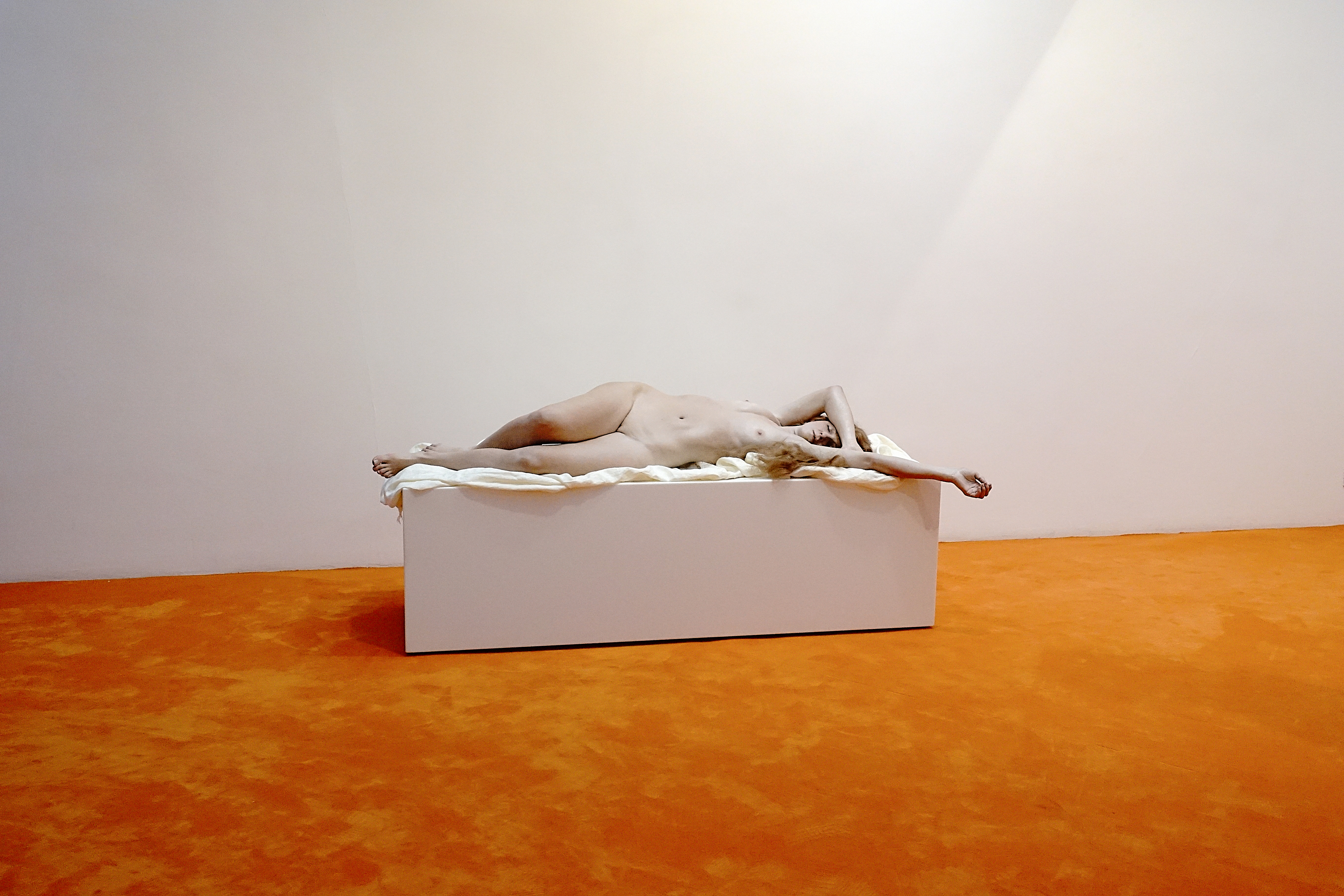
Magdalena, 2018, Polychromed bronze with acrylic hair, corian pedestal
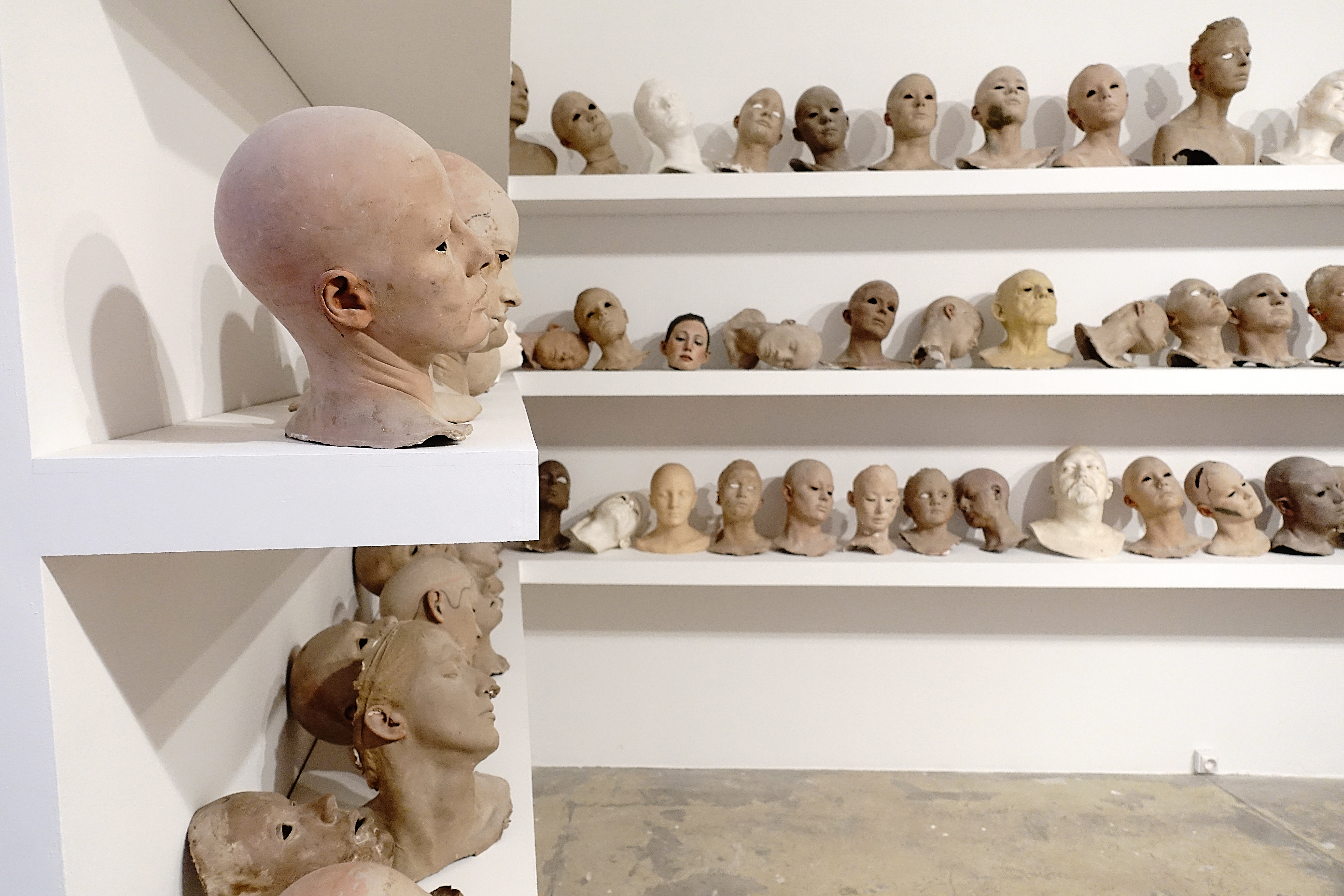
The Faces of Fifty Years, 1973-2017, Resin (heads and busts molding)
***
Photographer: Frank Perrin






